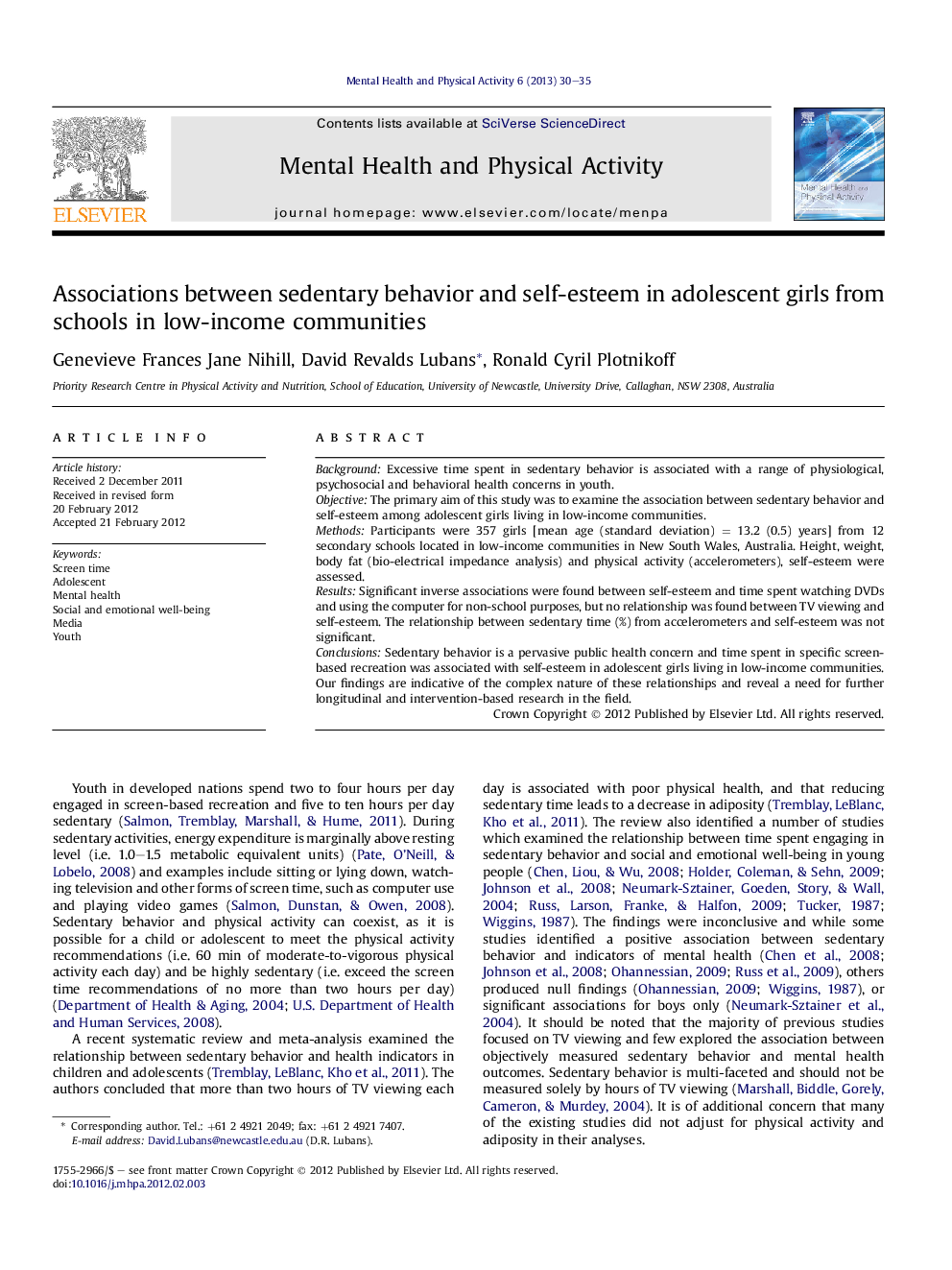| کد مقاله | کد نشریه | سال انتشار | مقاله انگلیسی | نسخه تمام متن |
|---|---|---|---|---|
| 913565 | 918328 | 2013 | 6 صفحه PDF | دانلود رایگان |

BackgroundExcessive time spent in sedentary behavior is associated with a range of physiological, psychosocial and behavioral health concerns in youth.ObjectiveThe primary aim of this study was to examine the association between sedentary behavior and self-esteem among adolescent girls living in low-income communities.MethodsParticipants were 357 girls [mean age (standard deviation) = 13.2 (0.5) years] from 12 secondary schools located in low-income communities in New South Wales, Australia. Height, weight, body fat (bio-electrical impedance analysis) and physical activity (accelerometers), self-esteem were assessed.ResultsSignificant inverse associations were found between self-esteem and time spent watching DVDs and using the computer for non-school purposes, but no relationship was found between TV viewing and self-esteem. The relationship between sedentary time (%) from accelerometers and self-esteem was not significant.ConclusionsSedentary behavior is a pervasive public health concern and time spent in specific screen-based recreation was associated with self-esteem in adolescent girls living in low-income communities. Our findings are indicative of the complex nature of these relationships and reveal a need for further longitudinal and intervention-based research in the field.
► Self-esteem was inversely related to time spent watching DVDs and using the computer.
► Objectively measured sedentary behavior was not associated with self-esteem.
► TV viewing was not associated with self-esteem in adolescent girls.
Journal: Mental Health and Physical Activity - Volume 6, Issue 1, March 2013, Pages 30–35